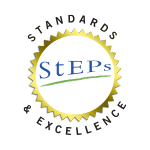Exciting changes are happening at the 800+ organizations taking part in the StEPs program (Exciting changes are happening at the 800+ organizations taking part in AASLH’s StEPs program (Standards and Excellence Program for History  Organizations). Our “StEPs Spotlight” series highlights accomplishments by the participating organizations. Join us each month to read how StEPs is helping these organizations take a leap forward by improving policies and practices, opening lines of communication, and setting goals for a bright future.
Organizations). Our “StEPs Spotlight” series highlights accomplishments by the participating organizations. Join us each month to read how StEPs is helping these organizations take a leap forward by improving policies and practices, opening lines of communication, and setting goals for a bright future.
Center for the History of Family Medicine, Leawood, Kansas
The Center for the History of Family Medicine (CHFM) is the primary repository of information and resources on the history and evolution of general practice, family practice and the specialty of family medicine in the United States. As such, the Center serves three purposes:
- Research library,
- Archives for major family medicine organizations and leaders within the specialty, and
- Museum featuring artifacts and exhibits from the earliest days of general practice up to the present day’s specialty of family medicine.
CHFM has two full-time staff, one seasonal intern, and five volunteers, as well as 16 volunteer board members. It enrolled in StEPs in January 2012 and graduated with five Gold certificates in 2014 (the sixth section, Stewardship of Historic Structures was not applicable to CHFM since it doesn’t own or manage any historic structures or landscapes).
What would you say is the most significant improvement within your organization as a result of taking part in StEPs?
The StEPs program has proven to be of value to us because it forced us to take a comprehensive look at all areas of our operations. In so doing, it helped us to clearly identify both the things that we were doing well, and the things that needed improvement. In sum, the one thing that StEPs has helped us with most is by providing focus, allowing us to better concentrate our time and resources in the areas where they are most needed.

The 1951 Scientific Meeting of the American Academy of General Practice via
Can you offer specific examples of other positive changes within your organization as a result of StEPs?
We have made many changes, including:
- All policies, including the Center’s code of ethics, are now reviewed every three years.
- Conflict of interest forms are distributed annually to members of the board.
- Legal counsel has reviewed our collections management policy.
- Line items have been added to the budget for staff training and for collections care and conservation.
- Back-up copies of donor records are scanned, placed on CD, and stored offsite.
- Language has been added to our access & use policy stating that only items which meet the Center’s collection criteria may be stored in the Center, and that the Center is not available for either short or long-term loans.
- Warning labels have been placed on all artifact boxes that may be heavy, contain chemicals, and/or sharp objects.
- An appraisal, as well as a fine arts/collections insurance policy has been obtained to cover the Center’s holdings.
Tell us how your organization is making its way through the program.
In January of 2012, a task force was formed consisting of CHFM management and staff and a member of the Center’s governing board to begin the process of reviewing each section of the StEPs workbook.
The task force met monthly and after working through each workbook section, it issued a series of recommendations which were submitted to the CHFM Board of Curators for review. In March 2014, the task force completed its review of the fifth and final section of the StEPs workbook (we were able to skip the sixth section since we do not own or manage any historic structures or landscapes).
A master to-do list was compiled and all of the tasks resulting from the recommendations have been or will be incorporated into the Center’s long-term strategic planning process.
What advice do you have for organizations just getting started in StEPs?
Take your time, and work through the workbook methodically. Just take it one step at a time and don’t try to rush things. Don’t worry if the process identifies a lot of areas where you may need improvement. You won’t be able to make changes all at once, so have the patience to set up a process that addresses how and when you will implement any needed changes.
Finally, which section of the workbook has been your favorite?
The Mission, Vision and Governance and Stewardship of Collections sections were most valuable to our organization. Both sections confirmed in many ways that we were doing a lot that was right, while also providing us with important insights that we had never really thought about before in areas where we could make improvements.
Feel free to offer any additional comments you want to make.
I would have to say that the StEPs program was-without question- the best $150 that I’ve ever spent in my professional life. The workbook is well-researched and organized, and provides repositories with clear and concise information to help them to improve their operations. StEPs is a program which has long been needed by historical organizations to help chart a clear pathway towards standardization in our field.
Center for the History of Family Medicine Website | Center for the History of Family Medicine Facebook |
Our thanks to Don Ivey for providing information for this blog post. Answers have been edited for length. Is your organization enrolled in StEPs and interested in being featured? Email Cherie Cook to learn more. If your organization is considering StEPs, read more about it here.




